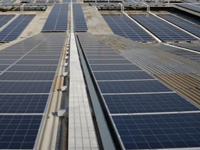Pakistan lacks a comprehensive energy efficiency development road map and investment programme and international experience indicates that the effective implementation and incorporation of energy efficiency into the policy mainstream requires concerted, long-term action and commitment, said Asian Development Bank report. In a project update report on 'Preparing the Sustainable Energy Efficiency Development Programme for Pakistan', the ADB emphasised the need for a comprehensive policy and regulatory framework; energy price and utility rate-setting reforms and incentives; a strong equipment standards, certification, and testing regime; complementary alternative and renewable energy programmes; and easy, widespread access to energy efficiency information, financing, products, and services by all categories and levels of energy market players and end users. According to ADB project study, the energy efficiency assessment conducted under ADB's Energy Efficiency Initiative determined that Pakistan has a large and untapped energy efficiency market. It identifies several energy efficiency improvement opportunities in gas distribution (supply side) and in the government and residential sectors (demand side) that can be tapped into. These opportunities may be explored without extensive precursor preparations, detailed policy design, or framework development, achieving immediate energy savings and deferring additional supply requirements. Further refinement and expansion of such options could result in a portfolio of immediate, bankable energy efficiency investment options for Pakistan, which the government and ADB may consider. According to report, the government and domestic consumers consume more than 60 percent of Pakistan's energy. The public sector is the most inefficient consumer, and the government is looking for more efficient utilisation and conservation measures. The government is eager to procure and adopt energy efficient technology in its operations, including the use of efficient lighting and heating and cooling systems in existing and new buildings, and introduction of energy-efficient building codes. The domestic sector currently uses 45 percent of the power supply. The most effective way to expedite the use of efficient compact fluorescent lamps by domestic consumers is to inject a large volume of such lamps into the market at a low price. This approach has been successful in several countries, where it has immediately reduced customers' monthly power bills. Preliminary analysis suggests that the introduction of 15 million high-quality compact fluorescent lamps into Pakistan's domestic market would save customers $78 million over the lifetime of those bulbs (approximately 2 years). This money could be used more productively in the economy. In addition, 880 MW of power demand would be avoided. The cost of such additional new generation capacity would be $1.15 billion (at $1.3 million per MW), ADB report disclosed. ADB report further pointed out that Pakistan's gas distribution system is ageing and is suffering from high technical losses (25-30 percent in some areas compared to industry standard 5 percent) that could be eliminated by replacing medium and low pressure pipes with more efficient, corrosion-free pipes. Natural gas accounted for half (43 billion cubic meters) of Pakistan's primary energy supply in 2006. A more efficient gas distribution system would result in significant national savings (up to $580 million per year) and increased use of cleaner fuel by more domestic, industrial, and commercial consumers, ADB report mentioned. It said that Electricity consumption, projected to grow an average of 8 percent per annum until 2015 (although recent experience suggests much higher demand growth), will similarly require large power generation capacity additions. Higher energy demand and imports will also require massive investments in associated port terminals, storage facilities, refining capacity, pipeline and transmission networks, and surface fuel transport infrastructure. During 2001-2006, ADB report stated that primary energy supply increased 5.4 percent per year. Meanwhile, consumption of electricity rose at an average annual rate of 6.8 percent, natural gas by 10.4 percent, liquefied petroleum gas by 17.6 percent, and coal by 22.8 percent. Electricity use, in particular, is growing robustly across all sectors-industry, agriculture, domestic, and commercial-recording a 10.2 percent overall jump in 2005-2006, while generation increases lagged at 9.3 percent during the same period. Copyright Business Recorder, 2008


